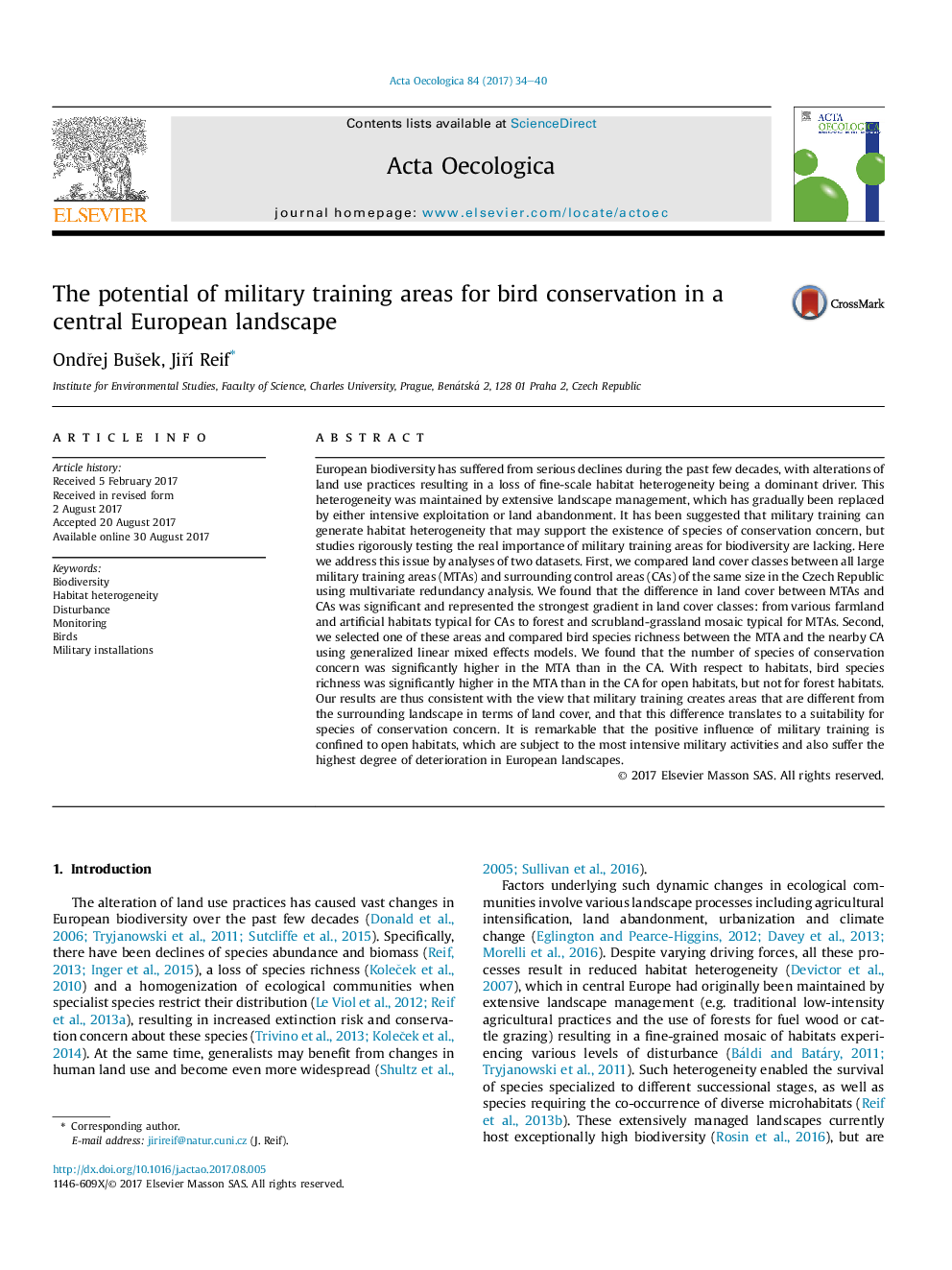| کد مقاله | کد نشریه | سال انتشار | مقاله انگلیسی | نسخه تمام متن |
|---|---|---|---|---|
| 5742492 | 1617688 | 2017 | 7 صفحه PDF | دانلود رایگان |
- Habitat cover of military training areas differs from the whole-country average.
- These areas are covered by a heterogeneous mosaic of open habitats.
- Due to this heterogeneity, these areas may support high bird species richness.
- We confirmed this expectation using data from one large military training area.
- The pattern of high species richness was pronounced in birds of conservation concern.
European biodiversity has suffered from serious declines during the past few decades, with alterations of land use practices resulting in a loss of fine-scale habitat heterogeneity being a dominant driver. This heterogeneity was maintained by extensive landscape management, which has gradually been replaced by either intensive exploitation or land abandonment. It has been suggested that military training can generate habitat heterogeneity that may support the existence of species of conservation concern, but studies rigorously testing the real importance of military training areas for biodiversity are lacking. Here we address this issue by analyses of two datasets. First, we compared land cover classes between all large military training areas (MTAs) and surrounding control areas (CAs) of the same size in the Czech Republic using multivariate redundancy analysis. We found that the difference in land cover between MTAs and CAs was significant and represented the strongest gradient in land cover classes: from various farmland and artificial habitats typical for CAs to forest and scrubland-grassland mosaic typical for MTAs. Second, we selected one of these areas and compared bird species richness between the MTA and the nearby CA using generalized linear mixed effects models. We found that the number of species of conservation concern was significantly higher in the MTA than in the CA. With respect to habitats, bird species richness was significantly higher in the MTA than in the CA for open habitats, but not for forest habitats. Our results are thus consistent with the view that military training creates areas that are different from the surrounding landscape in terms of land cover, and that this difference translates to a suitability for species of conservation concern. It is remarkable that the positive influence of military training is confined to open habitats, which are subject to the most intensive military activities and also suffer the highest degree of deterioration in European landscapes.
Journal: Acta Oecologica - Volume 84, October 2017, Pages 34-40
